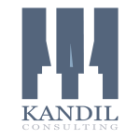by Luke HII
Share

Internal mobility is up 20 percent since the onset of COVID-19, according to LinkedIn data.
In addition, 50 percent of respondents expect their recruiting budget to decrease this year while 66 percent anticipate their learning and development (L&D) budget to increase or stay the same. Some experts believe that employers will build their workforce through internal mobility programs tied to reskilling initiatives or engage contingent talent instead of hiring externally. Others predict that companies will continue to move from static jobs toward project-based, cross-functional work dictated by changing business needs.
Increased engagement, lower costs and a shorter hiring process are a few of the benefits of the shift to internal mobility, but the biggest benefit may be improved retention, said Mark Lobosco, vice president of talent solutions at LinkedIn. “Our data show that employees stay 41 percent longer at companies that hire internally compared to those that don’t,” he said. “As companies continue to experience the benefits of internal mobility, we’ll begin to see it shift from an ad hoc solution to an essential corporate strategy. This will lead to HR and L&D partnering closer than ever before to better understand existing skill sets, address skill gaps in their organization and build more robust internal mobility programs.”
David Green, executive consultant on people analytics and director at Insight222, a London-based consulting firm, suggested that “skills are the new currency” in the workplace, and companies like IBM, Novartis and Unilever are building cultures where skills are of central importance. “To achieve this, they have brought siloed HR programs such as learning, career and internal mobility together with skills and technology that enables personalization to create a thriving marketplace for talent,” he said. “With the pandemic increasing the focus even more on internal mobility, the rise of the talent marketplace will gain pace in 2021.”
Tim Sackett, SHRM-SCP, president of HRU Technical Resources, an engineering and design staffing firm based in Lansing, Mich., agreed that building internal talent will ultimately be better in the long run, but acquiring new talent through external hiring or contingent staffing is the best bet for a volatile short-term outlook.
“2021 is not the time to decide to build talent, at least not in the first two quarters,” he said. “Most organizations have already started renting talent, and we see contingent labor as a percent of the workforce rising as organizations determine how the economy will come back. In 2021, organizations want to make sure that the organization can sustain itself in the long term before adding permanent headcount. The focus on hiring more contingent is a better strategy over the next 12-18 months, to ensure they will have much more flexibility and the ability to move quickly to move their headcount up and down based on immediate business needs.”
[SHRM 2021]
Dropdown Carets Select whether dropdown carets should...

